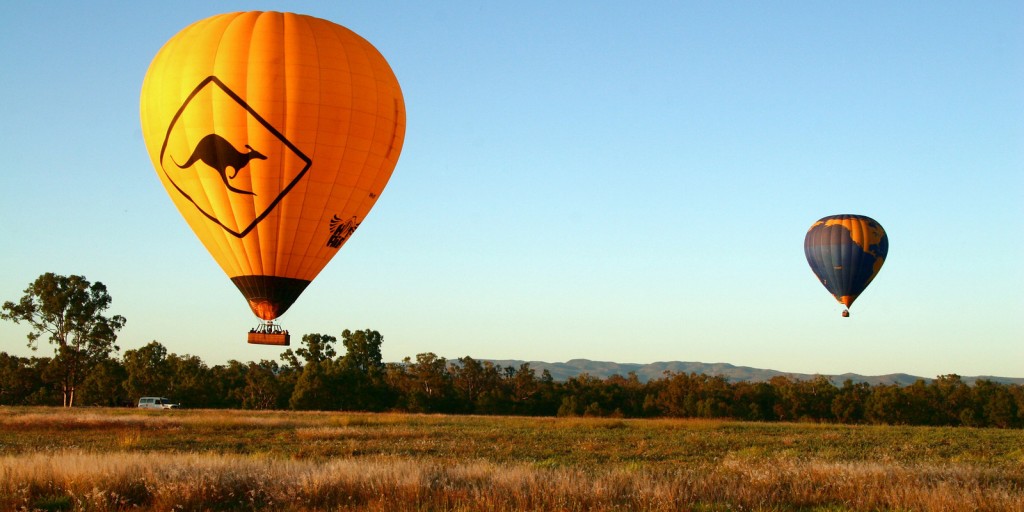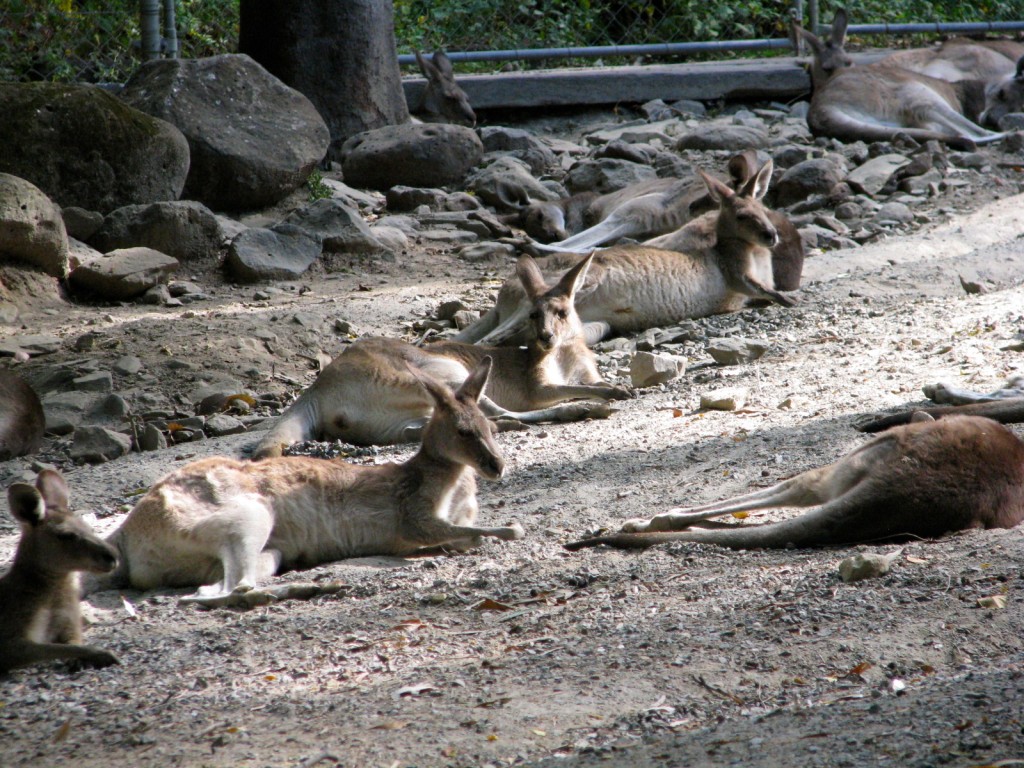You’ve probably never seen a system of living organisms as massive as the Great Barrier Reef, nor anything as naturally beautiful. Colors play abundantly below the crystal waters – pink sponges and green clams, electric-blue fish and purple urchins. The reef system runs along 900 gorgeous islands straddling the Coral Sea off Queensland, Australia. It supports a diverse ecosystem, from microorganisms to large mammals and reptiles, from exotic flora and fauna to near-extinct species. The 70-century old World Heritage Site is biodiversity and nature at its best, hence nicknamed the Blue Outback. It is the only living organism visible from space, but you can experience its sheer natural beauty up close.
Best Time to Visit
Visit the Great Barrier Reef between May and October when the temperature is comfortable at the average of 70 °F. These are also the driest months, which will make your adventures safe and ideal. Generally, the Great Barrier Reef and the coastal parts of North Queensland enjoy temperate climates. The months from November to April are wet months and can be extremely hot and humid, with temperatures reaching 80 °F. This is also the period when box jellyfish populate most of the beaches.
Getting There and Around
Travelers arrive at the Cairns International Airport, the nearest international airport to the barrier reef. From Cairns, there are boats that ply across the islands on scheduled trips. Water taxis and seaplanes are other options. Transportation within the islands is easiest with rented cars. Minibuses and privately-operated coaches ply their routes regularly. Since the reef islands are strewn miles from each other, there are several take-off points depending on your destination. If you are going to Lizard Island, get a seaplane from Cairns. If your point of interest is the Double Island, take off from Palm Cove town. Hinchinbrook is best accessed from Cardwell town, while Orpheus, Bedarra and Dunk Islands are best accessed from Townsville city. Airlie Beach, on the other hand, is the best jump-off site for Whitsunday, Daydream and Long Islands. The resorts where you stay will facilitate arrangements for your seaplane or helicopter.
What to Do
Whether you are learning to dive, doing day tour, snorkeling, diving or other top-side activities, the Great Barrier Reef offers the finest pleasures that can’t be found anywhere else in this world.
1) Join hot air balloon tours.

Ride to the skies and fly over the Atherton Tablelands with the ocean farther away.
2) Take Great Barrier Reef cruises.
Sail with cruises along Australia’s coastline and explore the waters and corals in two to seven days of cruise as far north to Lizard Island or out to the Coral Sea.
3) Take scenic flights.
Helicopters can take you for great aerial views over Daintree Rainforest, the reefs and the islands.
4) Race with the rapids.
There are numerous rivers winding through Cairns with great views and exhilarating white water rafting opportunities. The rapids are challenging along the rivers of Tully, Barron and Russell.
5) Join excursions to the tropical savanna and wetlands.
Enter a different world into Mareeba savanna and wetlands. It is the home to wallabies, kangaroos, and hundreds of bird species. Safaris range from USD90 to USD240, depending on activities and accommodation.
Main Attractions
The Great Barrier Reef is a massive 1,610-mile expanse of natural wonders. It is home to marine life, exotic flora and fauna, pristine beaches and over 3,000 reef systems. It is no wonder that it lends unsurpassed beauty to every inch of land above it and water surrounding it. Exploring the great reef will take years of appreciating pure and natural beauty. This list is limited, as words are limited to describe the grandeur of the Great Barrier Reef.
1) Reef Teach
Before venturing into the sights, there is an opportunity to learn everything in the proper context. At Reef Teach, a visitor sees and hears about the scientific history and evolution of the delicate ecosystem. There will be qualified resource people, e.g. marine biologists and conservationists, to deliver informative lectures. There is an entry fee of USD14 per person.
Address: 2nd Floor, Mainstreet Arcade, 81-85 Lake Street, Cairns
2) Australian Butterfly Sanctuary
Visit the largest butterfly flight aviary in Australia located in the center of Kuranda Village. It exhibits over 1,500 butterflies including the rare species of electric-blue Ulysses and red-and-gold Cairns birdwing. The aviary is a wildlife and rain forest habitat with lush foliage ideal for the proliferation of butterflies. Half-hour tours are available free. Admission is USD19.
Address: 8 Rob Veivers Drive, Kuranda Village, Cairns
3) Kuranda Heritage Markets
These rainforest markets were established over 20 years ago. Enjoy the unusual rainforest setting and browse through an innovative array of locally crafted goods. Surely, you’d like to bring home something with the Kuranda signature – leather goods made from crocodile and kangaroo skin, trinkets from opals and other Australian gems, boomerangs, didgeridoos, and other handicrafts. The markets are in the same vicinity as the butterfly sanctuary.
Address: Rob Veivers Drive, Kuranda Village, Cairns
4) The Esplanade
The Esplanade is a focal point of activities in Cairns. Children, families, backpackers and groups can swim in the saltwater swimming pools, congregate on the decks and shelters surrounding the lagoon, play on the park and sports facilities, and have picnic on the barbecue amenities. Check out the services offered by the commercial centers along the Esplanade. The pool opens daily except Wednesdays. All facilities are free for visitors to enjoy and explore.
Address: Spence and Upward Streets, Cairns
5) Skyrail Rainforest Cableway
Travel above the canopied rainforest and Kuranda Village via 6-passeger cable cars. Hop off at Kuranda to tour around the village and observe Aboriginal crafts and art. Join ranger-guided tours to the rainforest at Red Peak and Barron Falls. Tickets for one-way trip cost USD40 and round trip at USD61. Passengers can opt to return via the Kuranda Scenic Railway described in item 7. The trips run daily at 9:00 a.m. to 5:15 p.m., with the last round trip at 2:45 p.m.
Address: Captain Cook Highway, Western Arterial Road, Smithfield, Cairns
6) Cairns Tropical Zoo

Observe Australian wildlife in captivity at the Cairns Tropical Zoo. It showcases kangaroos, dingoes, emus, cassowaries, koalas, and various reptiles. Animal shows are performed daily. Enjoy breakfast on the deck with wildlife presentations. Nocturnal animals can also be observed at the night zoo. The zoo opens daily at 8:30 a.m. to 4:00 p.m.; the ticket costs USD30 per person. The night zoo opens at 6:00 p.m. to 10:00 p.m. from Mondays through Thursdays; a ticket costs USD91 per person.
Address: Captain Cook Highway, Palm Cove
7) Kuranda Scenic Railway
Take a breathtaking railway ride through verdant forests and tunnels that weave through Kuranda Village. Enjoy the ascent which takes around two hours. You can also combine this with tours and safaris to wildlife reserves and aboriginal centers. You pay USD43 for one-way ticket and USD65 for round-trip. The train departs every day at 8:30 and 9:30 a.m., and returns from Kuranda at 2:00 and 3:30 p.m. Take the ride at the Cairns Railway Station, Bunda St., Cairns.
8) Townsville Town Common Conservation Park
Bird-watchers will revel at these wetlands in October, when more than 280 species of birds turn this vast marsh into bird land. The flocks include herons, geese, spoonbills, ibises, and jabiru storks. Wallabies and echidnas join the fray. Dry season is from May to August and the birds leave for wetter grounds. Take an enjoyable walk along designated tracks and breathe fresh air. Entry is free.
Address: Townsville
9) Reef HQ Aquarium
Observe the Great Barrier Reef in microcosm. There are 100 species of corals in the “world’s largest live coral reef aquarium,” allowing close observation of this representative reef. There are tanks of sharks and rays, underwater tunnel walks, talks and tours, a café and shop. The facility is conveniently located near the city center and it is open every day from 9:30 a.m. Admission is USD25.
Address: 2-68 Flinders St., Townsville
10) Wildlife Habitat
Have a most unusual “Breakfast with the Birds.” For a fee of USD42, enjoy a tropical buffet breakfast with birds alighting on your shoulder and hovering to steal your steak. This amount paid for breakfast includes the entry fee of USD30. The park serves as habitat for koalas, cassowaries, kangaroos, and around 200 species of tropical fauna. Walk along free tours given by experts. If you miss the breakfast treat, catch the Lunch with the Lorikeets for the same price from noon till 2:00 p.m. The park opens daily from 8:00 a.m. to 5:00 p.m.
Address: Port Douglas Road at Agincourt St., Port Douglas
- Pages:
- 1
- 2
